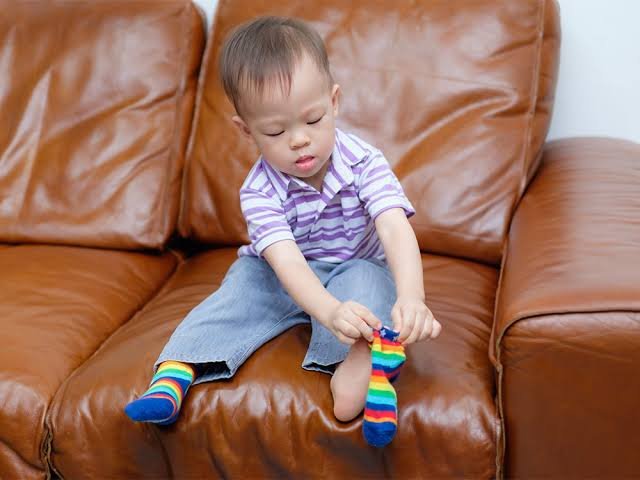Dressing up the little one might be a fun but demanding task, funny at times, because getting the exact size, style, and comfort yet all together can be a bit of a chore. But there are options that are stylish yet practical, like Maria B Kids which offer a great range for the young fashionistas.
So, for all the parents out there who want help with a quick guide on what to do and avoid in dressing up a child fashionably, approach this with an open mind. No matter whether one is dressing up a newborn or a teenager, these tips will keep the little one looking great and feeling comfortable.
Do: Prioritize Comfort
When it comes to children’s clothing, comfort takes precedence. Kids are very active and need clothes that keep up with their movements. Choose soft, breathable textiles such as cotton or bamboo. Avoid scratchy or stiff materials. These can irritate sensitive skin and limit movement.
Look for options that allow you to modify the waistline or straps. These can accommodate growth spurts. Clothes with lots of stretch or adjustable elements will provide a better fit. This also means more comfort for your child.
Don’t: Sacrifice Practicality for Style
It’s tempting to outfit your child in the most recent fashion trends. However, practicality is also important. Avoid clothes with complicated fastenings. Avoid products that are difficult to put on or take off. This is especially important for young children who are only starting to dress themselves.
Choose clothes that are easy to care for and durable. Kids often get their clothes dirty. Machine-washable fabrics are essential. Look for stain-resistant materials. Dark colors or patterns can help hide marks. Practicality ensures that the clothes can handle the wear and tear of daily activities.
Do: Consider the Weather
Dressing your child for the weather is important for their comfort and health. Use layers to adapt to changing temperatures. Begin with a base layer that wicks moisture from the skin. Add an insulating middle layer for warmth. Finish with a weather-resistant outer layer. This allows you to effortlessly adjust their attire as the weather changes during the day. For warmer weather, pick lightweight and breathable fabrics. Always apply sunscreen to any exposed skin. In colder weather, make sure your child wears enough warm layers. Include hats, gloves, and scarves. For rainy days, use waterproof clothing. This will keep your child dry and happy.
For warmer weather, pick lightweight and breathable fabrics. Always apply sunscreen to any exposed skin. In colder weather, make sure your child wears enough warm layers. Include hats, gloves, and scarves. For rainy days, use waterproof clothing. This will keep your child dry and happy.
Don’t: Ignore Your Child’s Preferences
You may have a concept of how you want your child to dress. However, it is equally necessary to consider their preferences. Allowing kids to choose their clothes can make dressing more enjoyable. It also helps them develop their own style.
Encourage your child to choose their clothes from options you provide. This helps children gain independence and confidence. If your child like a specific color or pattern, include it in their clothing.
Do: Invest in Versatile Pieces
When creating a child’s wardrobe, adaptability is essential. Invest on mix-and-matchable pieces. Classic items are especially useful. Solid-colored t-shirts, well-fitting jeans, and simple dresses are great examples. These pieces can be dressed up or down. You can combine them with different accessories to create a fresh look.
Choose pieces that can be easily transitioned between seasons by adding layers or changing accessories. This allows you to get more usage out of each piece while making the most of your clothes money.
Don’t: Overlook Size and Fit
Proper sizing is important for both comfort and appearance. Children grow rapidly, and so pick clothes that let them grow big, although not too big. Too tight clothing gives irritation and restricts movement, while too large ones are bulky and untidy.
Always check size charts and try clothes on your child if you can. If you’re shopping online, review the return policy in case the fit is off. Well-fitting clothes look better and allow your child to move and play comfortably.
Do: Focus on Safety
Safety is crucial in children’s clothing. Avoid clothes with small buttons, strings, or detachable parts that could be choking hazards. Ensure all decorations are securely attached. For outdoor play, pick bright or reflective clothing to keep your child visible. Choose well-fitting shoes that support their activities.
Don’t: Forget to Rotate the Wardrobe
Rotate kids’ wardrobes regularly to keep them fresh and functional. Change clothes with the seasons, remove items they’ve outgrown, and make space for new ones. Donating or passing down lightly used clothing is an excellent method to free up space while also helping others. Keep a few meaningful or well-maintained objects for future siblings or as keepsakes.
Conclusion
Dressing your child means finding a balance between comfort, practicality, and style. Choose soft, easy-to-wear clothes, listen to their preferences, and ensure safety. This way, your child stays happy, healthy, and stylish.


